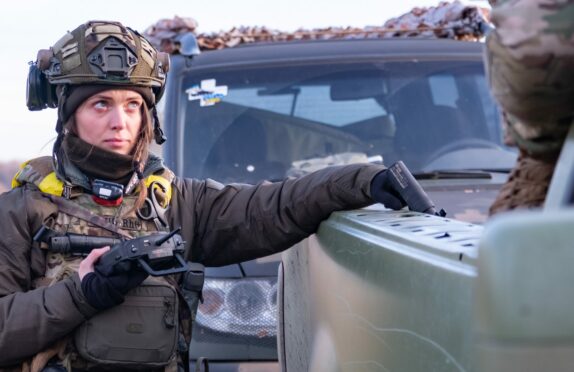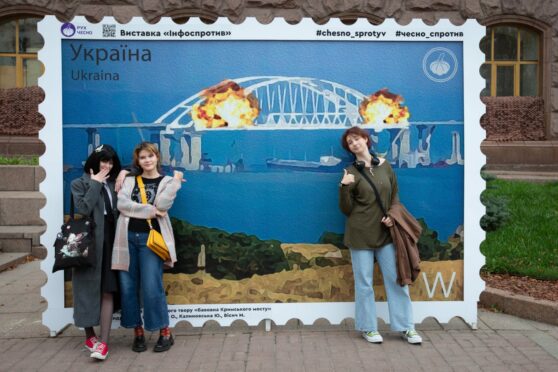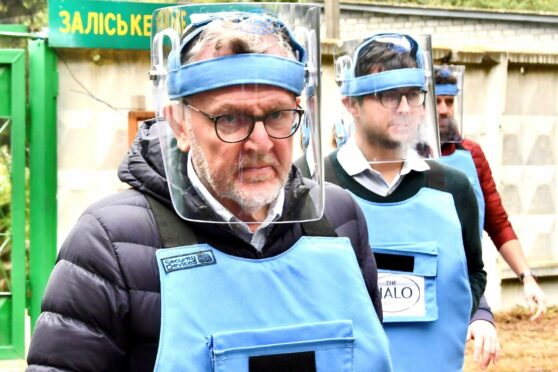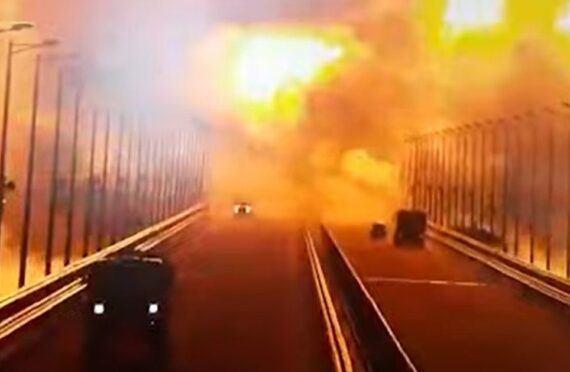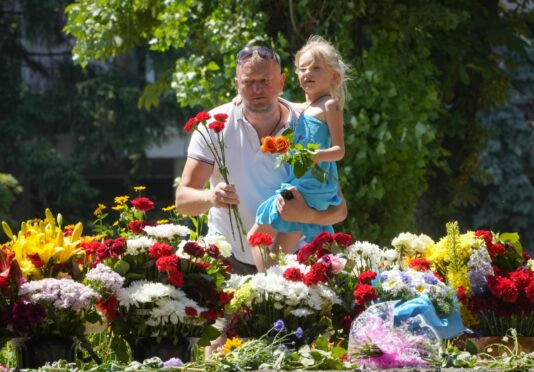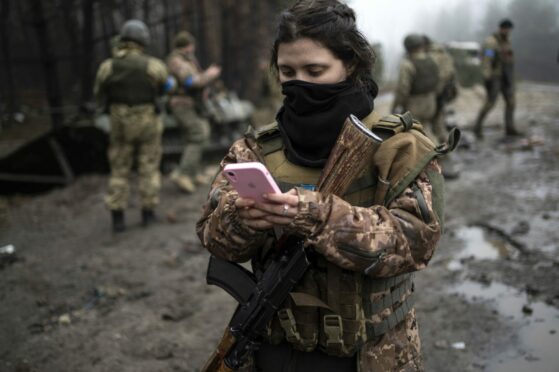
Retreating Russian soldiers are leaving devastation and lethal mines and booby-traps behind them, Volodymyr Zelensky warned yesterday.
The Ukrainian president condemned the scenes of destruction revealed as Russian troops continued to withdraw from areas around Kyiv as more than 30 towns and villages near the capital were recaptured.
In a video address to the nation posted yesterday, Zelensky said that Russian forces were making a slow withdrawal from the north of the country but a “complete disaster and many dangers are left”.
He said: “Firstly, the bombing may continue. Secondly, they are mining all this territory. Mining houses, equipment, even the bodies of killed people. Too many tripwire mines, too many other dangers.
“It is still impossible to return to normal life as it was. Even in the areas we return after the fighting. You will have to wait. Wait for our land to be cleared. Wait until you can be assured that new shelling is impossible.”
According to charity Human Rights Watch, Russia is using anti-personnel mines banned under international treaties. The POM-3s, known as “Medallion” mines, are fired by rocket launchers and descend by parachute before burying themselves in the ground. They are equipped with sensors capable of registering when someone is nearby and fire an explosive into the air, killing and maiming people within a 50ft radius. Human Rights Watch said the mines would leave a “deadly legacy for years to come”.
The 1997 Mine Ban Treaty bans the use, production, stockpiling and transfer of anti-personnel mines but Russia has not signed up to it.
Military expert Frederick Kagan, of the Washington-based Institute for the Study of War, said Russia’s use of mines indicate they have “gone over to the defensive and do not anticipate conducting renewed large-scale offensive operations in the near future in a number of locations across Ukraine”.
Ukrainian presidential adviser Oleksiy Arestovych said more than 30 settlements around Ukraine’s capital have been taken back from Russian forces. The cities of Bucha and Brovary have also been recaptured.
But Arestovych warned there would still be heavy battles ahead for the south and east of Ukraine, including Mariupol. In Bucha it was last night claimed that Ukrainian troops had found the bodies of more than 20 men in civilian clothes in one street. In what could be evidence of Russian war crimes, one man had his hands tied.
Meanwhile, Russia accused Ukraine of carrying out a military helicopter rocket attack on an oil depot in Belgorod, a Russian city about 25km from the Ukrainian border.
If confirmed, it would be the first Ukraininan air strike on Russian soil since Russia invaded last month. Ukraine has denied responsibility.
A highly advanced UK surface-to-air missile has reportedly been used to shoot down a Russian helicopter for the first time, with the Kremlin promising retaliation.
The Starstreak anti-aircraft missile system was supplied by Britain last month and has been used by Ukrainians for a week.
Andrey Kelin, Russia’s ambassador to the UK, said: “Any arms supplies are destabilising, especially those mentioned by Defence Minister Ben Wallace. They aggravate the situation, make it even more bloody. These seem to be new, quite high-precision weapons.”
The United States is reported to be helping to move Soviet-made tanks to Ukraine. The tanks, requested by Zelensky, will give Ukraine the ability to conduct long-range artillery strikes on Russian targets, according to a US official.
Yesterday, the Red Cross continued attempts to evacuate civilians out of Mariupol, the scene of some of the fiercest fighting, and where 160,000 people are estimated to be trapped.
At least 33 people have been confirmed as killed and 34 injured in a Russian rocket strike on the regional government building in the southern Ukrainian port city of Mykolaiv.
Pope Francis, who is considering a visit to Kyiv, condemned Russian President Vladimir Putin for launching a “savage” war against Ukraine.
The Pope did not cite the Russian president by name, but said “some potentate” had unleashed the threat of nuclear war on the world in an “infantile and destructive aggression” under the guise of “anachronist claims of nationalistic interests”.
Meanwhile, Russia’s top space official warned the future of the International Space Station was hanging in the balance after the US, the EU and Canadian space agencies missed a deadline for the lifting of sanctions on Russian enterprises and hardware.
And Ukraine’s intelligence agency, the SBU, accused China of launching a huge cyber attack on its military and nuclear facilities as Russia was preparing to invade. More than 600 websites belonging to key institutions were hit, it claimed.

Enjoy the convenience of having The Sunday Post delivered as a digital ePaper straight to your smartphone, tablet or computer.
Subscribe for only £5.49 a month and enjoy all the benefits of the printed paper as a digital replica.
Subscribe